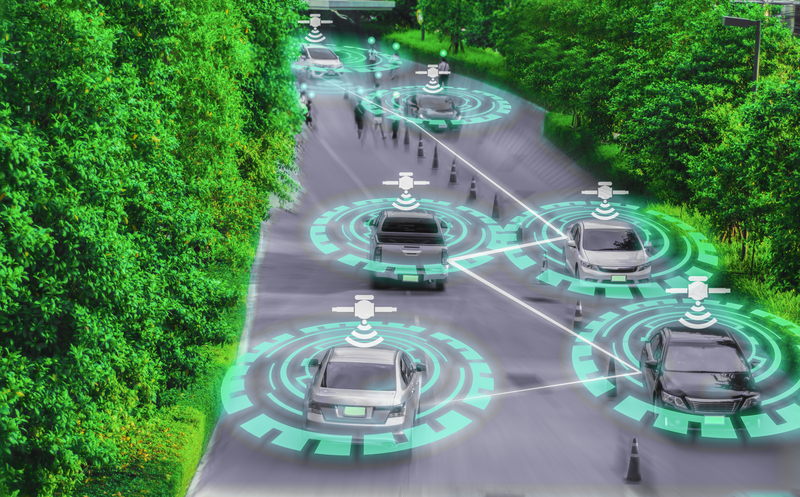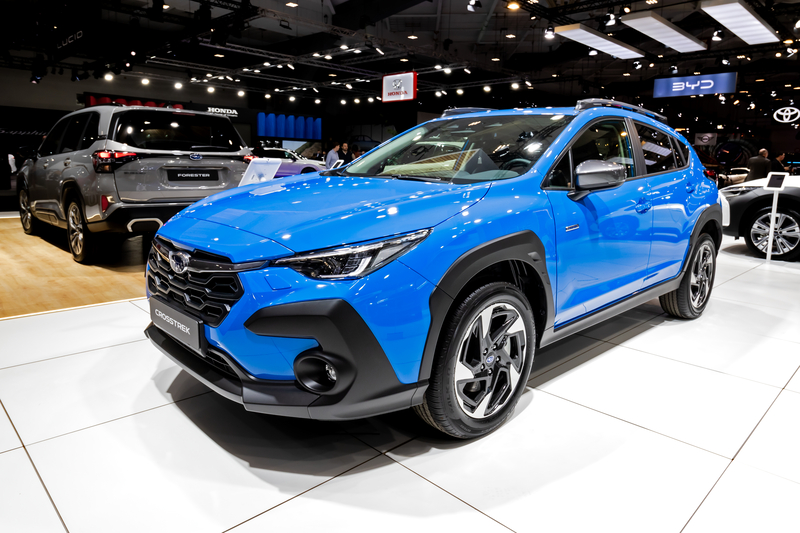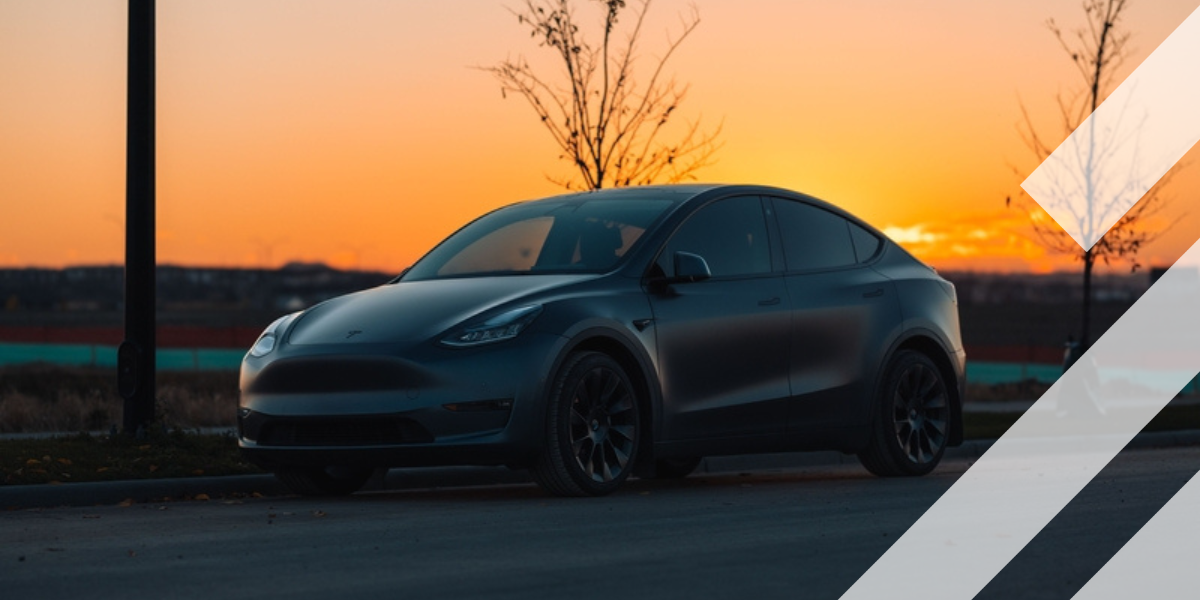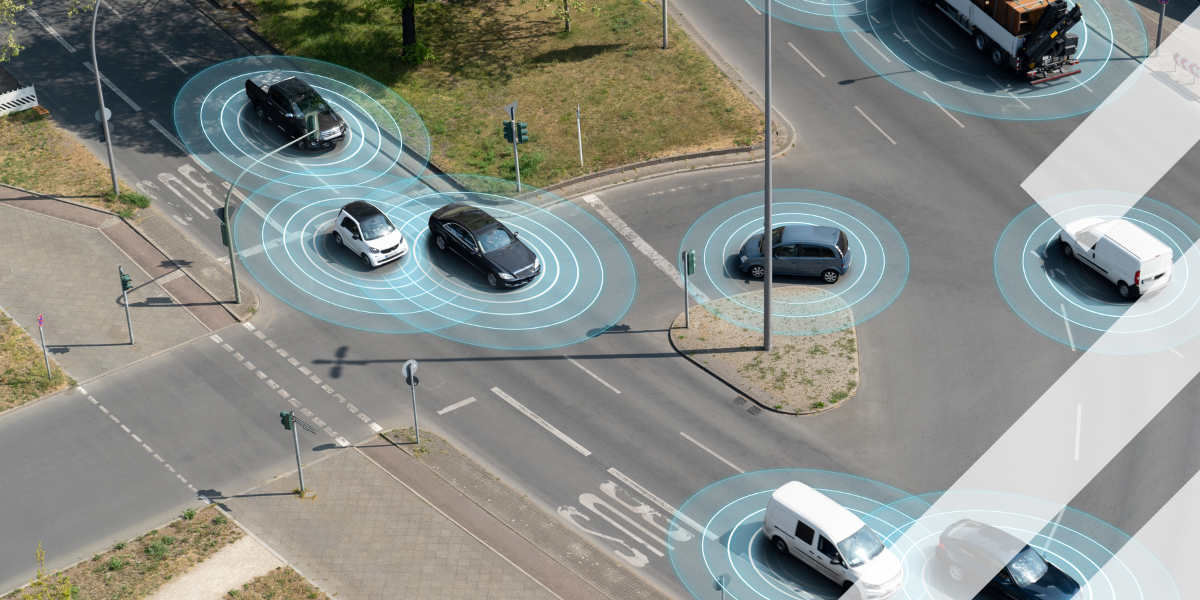Advances in Vehicle Safety Systems: A Global Perspective
According to data from the European Commission and Eurostat, the number of road deaths in the EU decreased from approximately 29,611 in 2010 to 20,380 in 2023. This represents a reduction of about 31% over the 13-year period, largely thanks (although clearly not entirely) to advances in vehicle safety and their implementation by the car manufacturers and, in the case of Europe, continued commitment to policy implementation, technological advancements, and infrastructure development by the EU states. But still, 20,380 deaths is a football stadium full of people. So what are we doing about it?

(Credit: Phutaphat Tipsana)
The aforementioned vehicle safety systems have evolved significantly over the past decade, driven by technological innovation, regulatory mandates, and a growing emphasis on reducing road fatalities.
Europe, the United States, and Japan have each contributed to this evolution, implementing various safety technologies and standards, all designed with one thing in mind: saving lives. This article explores recent advancements in car safety systems across these regions, highlighting key developments and their implications.
Vehicle safety systems have evolved significantly over the past decade, driven by technological innovation, regulatory mandates, and a growing emphasis on reducing road fatalities
Europe: Pioneering Comprehensive Safety Regulations
Europe has been at the forefront of implementing stringent vehicle safety regulations. In July 2022, the European Union mandated the inclusion of several advanced safety features in all new vehicles, including:
• Intelligent Speed Assistance (ISA) that alerts drivers when they exceed speed limits, helping to prevent accidents caused by speeding.
• Automated Emergency Braking (AEB) systems detect potential collisions and automatically apply brakes to mitigate or avoid accidents.
• Event Data Recorders (EDRs) that capture critical data before and after collisions, aiding in accident analysis and improving future vehicle designs.
European New Car Assessment Programme (Euro NCAP) has advocated for the reintroduction of physical buttons for essential functions, citing concerns over driver distraction from touchscreen interfaces. This move aims to increase vehicle safety while at the same time enhancing usability by reducing the time drivers spend interacting with infotainment systems, removing the temptation to use the system for other purposes.

AEB courtesy (Credit: RAC)
Euro NCAP) has advocated for the reintroduction of physical buttons for essential functions, citing concerns over driver distraction from touchscreen interfaces
United States: Emphasising ADAS
In the United States, the National Highway Traffic Safety Administration (NHTSA) has focused on integrating Advanced Driver Assistance Systems (ADAS) into vehicles. Starting with the 2026 model year, NHTSA will update its New Car Assessment Program (NCAP) to include evaluations of:
• Pedestrian Automatic Emergency Braking that enhances vehicle response to pedestrians, especially in low-light conditions.
• Lane-Keeping Assist that helps prevent unintentional lane departures.
• Blind Spot Warning and Intervention, alerting drivers to vehicles in adjacent lanes with the capability of intervening to prevent collisions.
Furthermore, the US plans to mandate AEB systems in all new cars and light trucks by 2029, aiming to reduce rear-end collisions and associated injuries.
Japan: Integrating Technology for Enhanced Safety
Japan has prioritised the integration of cutting-edge technology and regulatory measures to bolster vehicle safety - since 2021, all new cars in Japan are required to have AEB systems capable of detecting vehicles and pedestrians.
Japanese car manufacturers have also embraced AI-driven driver monitoring systems that use cameras and sensors to detect driver fatigue, distraction, and other behaviours that may compromise safety. By alerting drivers or initiating corrective actions, these technologies aim to prevent accidents before they occur.
Another significant development is the mandate for all new automatic passenger vehicles to incorporate unintended acceleration prevention systems by June 2025. This is designed to prevent accidents caused by drivers mistakenly pressing the accelerator instead of the brake, a concern particularly relevant to Japan's ageing driver population. The system uses sensors to detect obstacles and suppresses acceleration, ensuring the vehicle either stops or slows down to avoid collisions.
All new automatic passenger vehicles in Japan must incorporate unintended acceleration prevention systems by June 2025
Complementing these technological advancements, Japan has contributed to the establishment of ISO 34502, an international standard for scenario-based safety evaluation of automated driving systems. This framework facilitates systematic safety assessments, promoting the development and global acceptance of autonomous vehicle technologies. With safety at the forefront of its collective national thinking Japan is investing in projects such as Tier IV's development of self-driving electric taxis. These vehicles, equipped with advanced sensors and remote monitoring systems, are set to commence operations in Tokyo's Odaiba district. The initiative aims to expand Level 4 autonomous transport services to over 100 municipalities by 2027, addressing driver shortages and enhancing mobility options.

Japan’s Odaiba District will soon be home to a fleet of self-driving electric taxis (Credit: Photo3idea)
Japan is also pioneering an automated cargo transport corridor between Tokyo and Osaka, known as the "conveyor belt road." This project envisions autonomous, wheeled cargo containers moving along a dedicated 310-mile corridor, potentially replacing up to 25,000 trucks daily. The initiative seeks to alleviate driver shortages, reduce carbon emissions, and improve logistical efficiency, with full operations anticipated by the mid-2030s.
The safety implications are worthy of an article of their own, but through these comprehensive efforts, Japan is positioning itself at the forefront of vehicle safety innovation, aiming to create a safer and more efficient transportation landscape.
Global Trends and Future Directions
Across all regions, there is a clear trend toward the adoption of semi-autonomous driving features. For instance, Mercedes-Benz has introduced adaptive cruise control systems that enable automatic lane changes, enhancing driver convenience and safety.
Additionally, Vehicle-to-Everything (V2X) communication is finally gaining traction. This technology allows vehicles to communicate with each other and with infrastructure, providing real-time information about road conditions, hazards, and traffic, thereby improving situational awareness and reducing accidents.
Advancements in vehicle safety systems across Europe, the United States, and Japan reflect a global commitment to reducing road accidents and fatalities. Through regulatory mandates and technological innovations, these regions are enhancing the safety of vehicles for drivers, passengers, and pedestrians alike. As these technologies continue to evolve, collaboration among international stakeholders will be crucial in setting global safety standards and ensuring widespread adoption of life-saving systems.
Advancements in vehicle safety systems across Europe, the United States, and Japan reflect a global commitment to reducing road accidents and fatalities
Top 10 Safest Car Brands (Global)
Based on comprehensive safety assessments from organizations like Euro NCAP, the Insurance Institute for Highway Safety (IIHS), and the National Highway Traffic Safety Administration (NHTSA), the following car brands have consistently demonstrated exceptional safety performance. These evaluations consider factors such as crash test results, advanced driver-assistance systems (ADAS), and overall vehicle safety features:
1. Volvo
Renowned for its unwavering commitment to safety, Volvo has achieved a 100% rate of 5-star safety ratings across 76 models tested over the past decade. Notable models like the XC60 and XC90 have earned top honours from both Euro NCAP and IIHS, with features such as Pilot Assist and advanced driver monitoring systems enhancing their safety credentials.
2. Subaru
Subaru matches Volvo's impeccable record, with all 72 models tested receiving 5-star safety ratings. The brand's EyeSight Driver Assist Technology, standard all-wheel drive, and robust crashworthiness contribute to its stellar safety reputation.
3. Tesla
Tesla's electric vehicles, including the Model 3 and Model Y, have consistently secured 5-star ratings in both American and European safety tests. Their advanced safety features, such as automatic emergency braking and lane-keeping assist, play a significant role in these achievements.
4. Genesis
Hyundai's luxury division, Genesis, has rapidly gained recognition for safety, with all 15 models tested earning 5-star ratings. Models including e the G80 and GV60 have received IIHS Top Safety Pick+ awards, thanks to features like Highway Driving Assist and comprehensive ADAS suites.

Genesis G70 (Credit: Tatiana Golmer)
5. Polestar
As an electric performance brand under Volvo, Polestar has achieved a perfect safety record, with all tested models receiving 5-star ratings. The Polestar 2, for instance, scored 93% for adult occupant protection and 83% for safety assist in Euro NCAP evaluations.
6. Buick
Buick has demonstrated strong safety performance, with 98.3% of its 59 models tested receiving 5-star ratings. The brand's vehicles are equipped with features like forward collision alert and lane departure warning, contributing to their high safety scores.
7. Acura
Honda's luxury brand, Acura, boasts a 98.2% rate of 5-star safety ratings across 55 models. Models such as the MDX and Integra have earned IIHS Top Safety Pick+ designations, reflecting Acura's emphasis on safety technologies like adaptive cruise control and collision mitigation braking systems.
8. Honda
With a 94.6% rate of 5-star safety ratings among 111 models tested, Honda continues to prioritise safety across its line-up. Vehicles like the Accord and CR-V are equipped with Honda Sensing® technologies, including road departure mitigation and traffic sign recognition.
9. Mazda
Mazda has achieved a 92.7% rate of 5-star safety ratings across 55 models. The brand's commitment to safety is evident in models like the CX-80, which was named Euro NCAP's Best in Class Large SUV for 2024, scoring 92% for adult occupant protection and 88% for child occupant protection.
10. BMW
BMW maintains a strong safety record, with 91.3% of its 92 models tested receiving 5-star ratings. The brand's vehicles are equipped with advanced safety features, including active cruise control and lane departure warning, contributing to their high safety scores.
Share your story
Do you have an innovation, research results or an other interesting topic you would like to share with the professionals in the infrastructure, traffic management, safety, smart mobility and parking industry? The Intertraffic website and social media channels are a great platform to showcase your stories!
Please contact our Sr Brand Marketing Manager Carola Jansen-Young.
Are you an Intertraffic exhibitor?
Make sure you add your latest press releases to your Company Profile in the Exhibitor Portal for free exposure.
Get up to speed on the mobility industry - our newsletter straight to your inbox!



